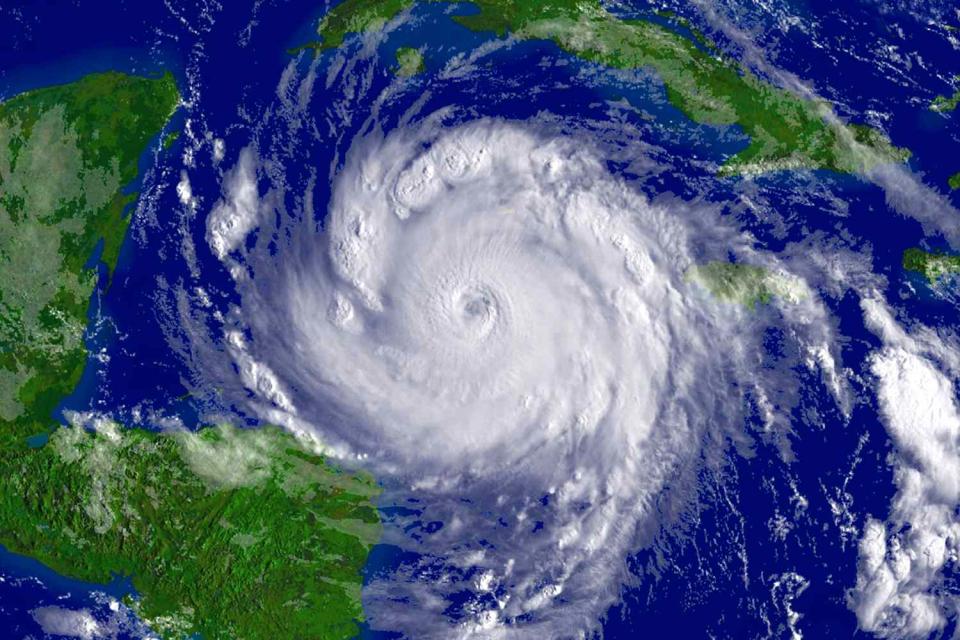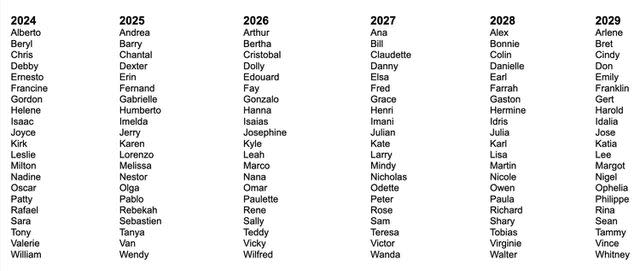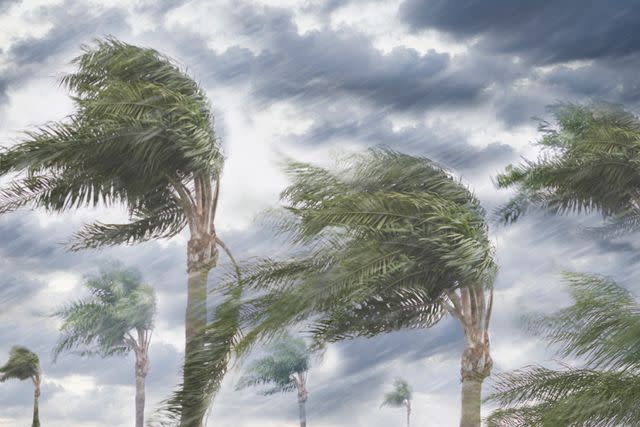How Do Tropical Storms and Hurricanes Get Their Names? What to Know
The World Meteorological Organization uses six alphabetical lists of names for Atlantic storms and hurricanes that are rotated every six years

Getty
A satellite image of a hurricaneThe North Atlantic hurricane season began on June 1. So far, three storms have made landfall, with Storm Alberto, Hurricane Beryl and Storm Chris affecting parts of Mexico, Texas and the Caribbean.
But how do tropical storms and hurricanes get their names?
According to the World Meteorological Organization, there are six alphabetical lists of names for Atlantic storms and hurricanes that are rotated every six years. This means the 2024 list will be used again in 2030.
The list, which is maintained by the WMO, covers only 21 letters of the alphabet, as “it is difficult to find six suitable names (one for each of the 6 rotating lists) starting with Q, U, X, Y and Z,” per the WMO.
Related: NOAA Predicts 2024 Atlantic Hurricane Season Will Be More Active Than Normal — Here's Why
The first storm of the season, which ends on Nov. 30, is given a name that begins with A, the second B, the third C and so on.
The next storm or hurricane of the 2024 season will be called Debby, with the list ending in William.
According to the WMO, assigning names to hurricanes and storms is done to make tracking and discussing specific storms more straightforward.

National Hurricane Center/NOAA
The six lists of storm and hurricane namesRelated: At Least 5 People, Including a Baby, Dead After Tornadoes Hit Oklahoma and Iowa
“Naming also helps to avoid confusion among meteorologists, media, emergency management agencies and the public,” the organization adds. “Additionally, naming tropical cyclones can aid historical record-keeping and research on storm behaviour and impacts.”
The PEOPLE Puzzler crossword is here! How quickly can you solve it? Play now!
A developing cyclone is named when it officially becomes a tropical storm, meaning it has sustained winds of at least 39 mph, per CBS News. A tropical storm becomes classified as a hurricane once maximum sustained winds reach 74 mph.
The National Hurricane Center began keeping a list of names in 1953, per the WMO. Only female names were initially used before male names were introduced, alternating with the female ones, in 1979. The six current lists have been in rotation since then, with a few names having been retired and replaced.

Getty
A stock image of a tropical stormRelated: Storm Chaser Rescues Texas Family After Tornado Destroys Home — and It Was All Caught on Livestream
Names are retired if a storm is particularly deadly. Notable ones include Hurricane Katrina, the Category 5 storm whose eye struck New Orleans in 2005 and claimed over 1,100 lives. Katrina was replaced with Katia, per the NHC.
The decision to remove names is determined at a committee meeting, according to the NHC, which also maintains the list of retired names.
Never miss a story — sign up for PEOPLE's free daily newsletter to stay up-to-date on the best of what PEOPLE has to offer, from celebrity news to compelling human interest stories.
But what happens if the list of alphabetical names runs out?
During a particularly active hurricane season, the WMO uses a supplemental list of names in lieu of the Greek alphabet, which was used until 2021. According to the WMO, extra names have only had to be used twice — in 2005 and 2020.
According to the US weather agency, per BBC News, there could be as many as seven hurricanes this year, which would be more than double the usual number.
For more People news, make sure to sign up for our newsletter!
Read the original article on People.


